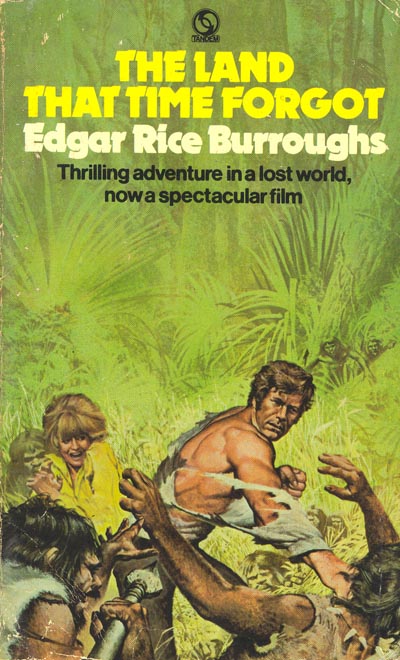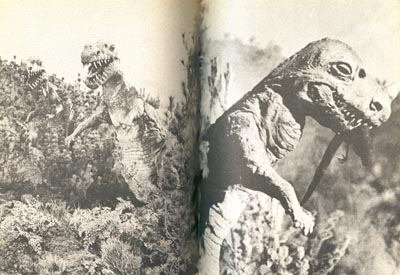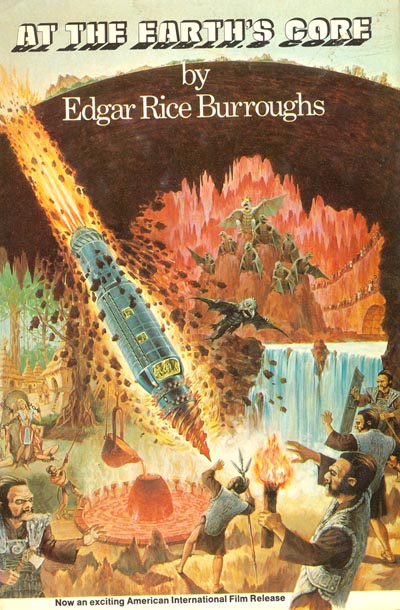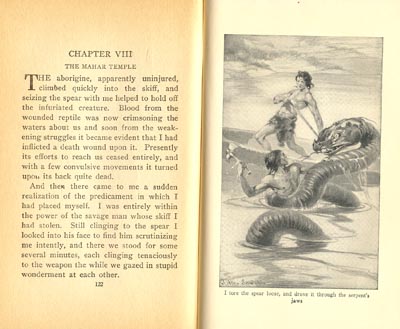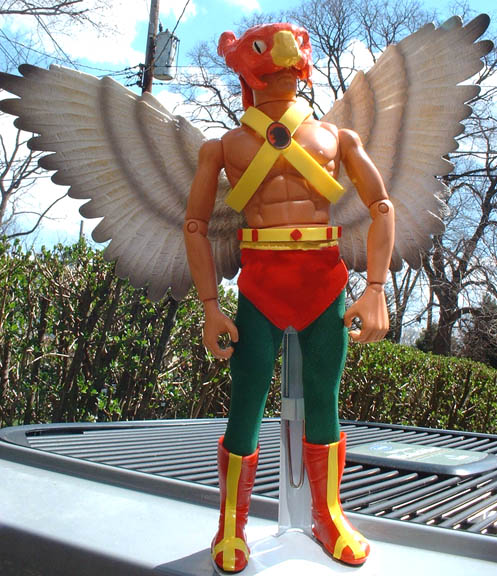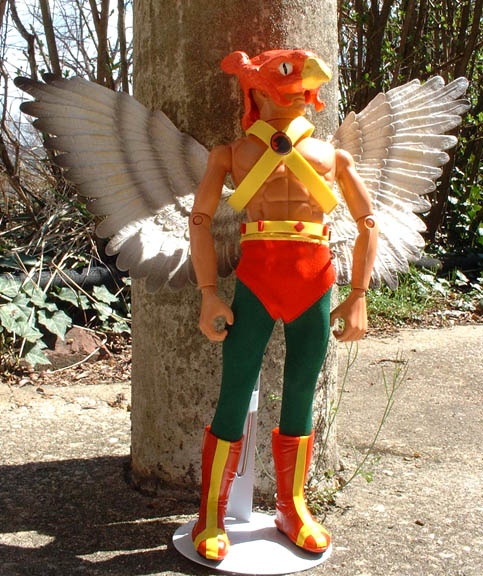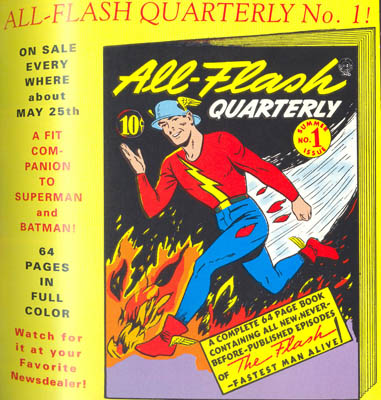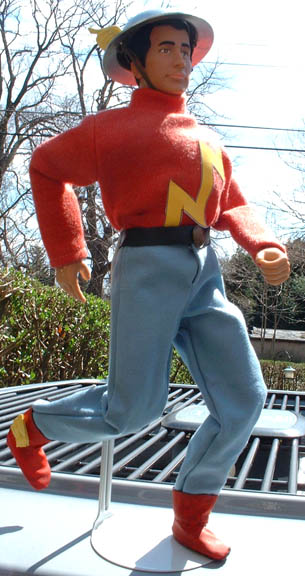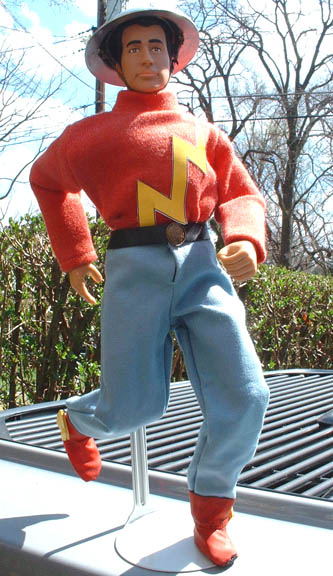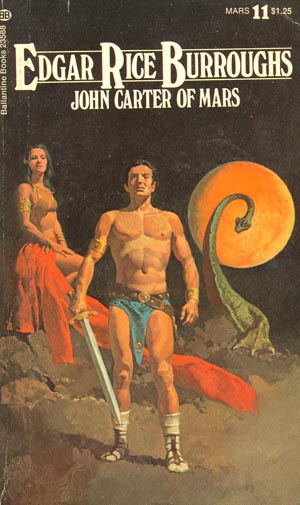 Although Tarzan is by far Edgar Rice Burroughs’s most famous creation, John Carter of Mars was his first and, for my money, his most interesting. In the novel A Princess of Mars (originally titled Under the Moons of Mars), we are introduced to Virginia Civil War Captain John Carter who, while entering a lonely cave, is consumed by a mysterious vapor which renders him unconscious. When he awakes, he finds that he is on the planet Mars. Naked and completely vulnerable, he happens upon a nest of giant eggs. Turns out these are the incubating offspring of the Tharks. Soon, he is attacked by a group of 15-feet-tall, green creatures with four arms and tusks jutting from their protruding jaws. While unarmed, Carter is able to avoid injury by leaping great distances and exhibiting tremendous strength, thanks to the lighter gravity on Mars. The leader of the Thark group, Tars Tarkus, finds Carter a novelty and decides to take him back to his village. Here Carter meets the other Tharks and learns the language of Mars, or Barsoom as it is called in the native tongue.
Although Tarzan is by far Edgar Rice Burroughs’s most famous creation, John Carter of Mars was his first and, for my money, his most interesting. In the novel A Princess of Mars (originally titled Under the Moons of Mars), we are introduced to Virginia Civil War Captain John Carter who, while entering a lonely cave, is consumed by a mysterious vapor which renders him unconscious. When he awakes, he finds that he is on the planet Mars. Naked and completely vulnerable, he happens upon a nest of giant eggs. Turns out these are the incubating offspring of the Tharks. Soon, he is attacked by a group of 15-feet-tall, green creatures with four arms and tusks jutting from their protruding jaws. While unarmed, Carter is able to avoid injury by leaping great distances and exhibiting tremendous strength, thanks to the lighter gravity on Mars. The leader of the Thark group, Tars Tarkus, finds Carter a novelty and decides to take him back to his village. Here Carter meets the other Tharks and learns the language of Mars, or Barsoom as it is called in the native tongue.Carter becomes a welcome honorary member of the Tharks until an airship crashes near the village and red-skinned humanoids are rousted from the craft by the Tharks. It turns out they are from Helium on a scientific expedition, but the Tharks don’t buy their story, having been at war with the Heliumites for years. The expedition is led by the raven-haired Princess Dejah Thoris and, being that she looks like the hot chicks back home, Carter instantly falls for her. When one of the Tharks tries to kill the Heliumites, Carter kills the Thark, suddenly putting him on the outs with his adopted people. Soon, Carter and Dejah Thoris are on the run. Eventually, Tars Tarkus defies his own people and befriends Carter. From this point, Carter bounces from one battle to another, one adventure to another, and wins the hand of Dejah Thoris. However, he dies on Mars and returns to Earth. After living a successful life on Earth, he dies a natural death, but returns to Mars as his younger self to continue his adventures. There’s a lot more, but that’s the basic gist.
My first exposure to John Carter was not from the original novels, but through comic books. In the late 70s, Marvel ran a comic series based on the hero. The artwork was handled by various artists over the years, but the books were all top quality. Since I was heavily into comic book collecting at the time, I also found the John Carter stories which appeared in DC Comics title, Weird Worlds. Incidentally, the back-up feature in Weird Worlds was my old friend David Innes from Pellucidar. Finally, I landed copies of Gold Key’s John Carter comic from the 60s. Although the artwork was simplistic, I loved the straight forward nature of the story telling. I later learned that these were reprints of Dell comics from the 50s and were closely based on the early Burroughs novels. That convinced me that I needed to read those books.
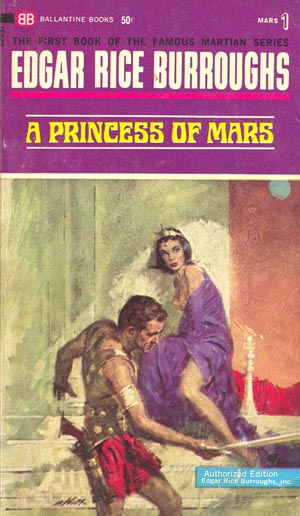 I have to be honest; I only read the first book and a few others. By the time I got around to the John Carter series, I was entering high school and my attention was slipping to other interests. Still, I was intrigued by the concept of such a civilization, so strange and yet so close to our own planet. The fact that Carter’s experiences happened in the 1800s set up a plausible time line, at least in my teenage mind. Burroughs made it clear that the inhabitants of Barsoom were hanging on by a thread on this desert planet, using an “atmosphere factory” to maintain a breathable climate. The Viking mission of 1976 led us to believe that Mars was essentially a barren rock. To me, this meant that the races of Barsoom, torn by arrogance and hostility, fought and argued while their fragile environment wasted away. Carter experienced the final years of their civilization, before they were choked by the feeble atmosphere and buried in the sands of Mars. Unlike the uncharted islands or underground worlds of Burroughs's other stories, the Mars premise seemed almost plausible. I wanted to believe that perhaps this world did once exist.
I have to be honest; I only read the first book and a few others. By the time I got around to the John Carter series, I was entering high school and my attention was slipping to other interests. Still, I was intrigued by the concept of such a civilization, so strange and yet so close to our own planet. The fact that Carter’s experiences happened in the 1800s set up a plausible time line, at least in my teenage mind. Burroughs made it clear that the inhabitants of Barsoom were hanging on by a thread on this desert planet, using an “atmosphere factory” to maintain a breathable climate. The Viking mission of 1976 led us to believe that Mars was essentially a barren rock. To me, this meant that the races of Barsoom, torn by arrogance and hostility, fought and argued while their fragile environment wasted away. Carter experienced the final years of their civilization, before they were choked by the feeble atmosphere and buried in the sands of Mars. Unlike the uncharted islands or underground worlds of Burroughs's other stories, the Mars premise seemed almost plausible. I wanted to believe that perhaps this world did once exist.
For the past few years, a movie project based on John Carter has been kicked around. Currently, it looks like the Warlord of Mars is in the hands of Disney and the Pixar people. God help us! All I can say is, I hope they don’t screw it up. Just like Jules Verne and H.G. Wells before him, Edgar Rice Burroughs invented a new type of story telling which formed a pillar in the genre wing known as science fiction. Without Burroughs, there is no Buck Rogers, Flash Gordon, or even Star Wars. His blending of swashbuckling and planet hopping, swords and ray guns, Arabian-style kingdoms and weird aliens, created a style we have loved for decades. Disney must understand that they are dealing with the original article, and they must treat Captain Carter with a great deal of respect.





